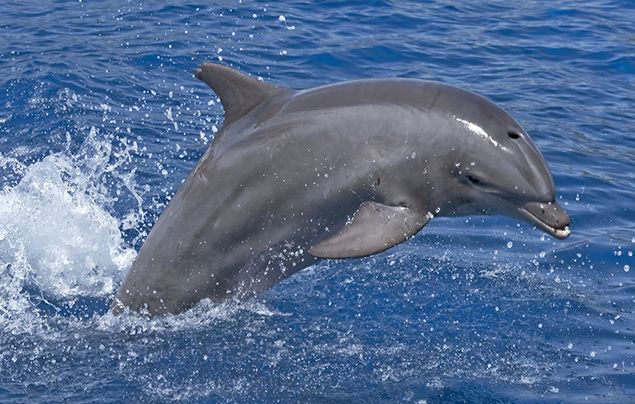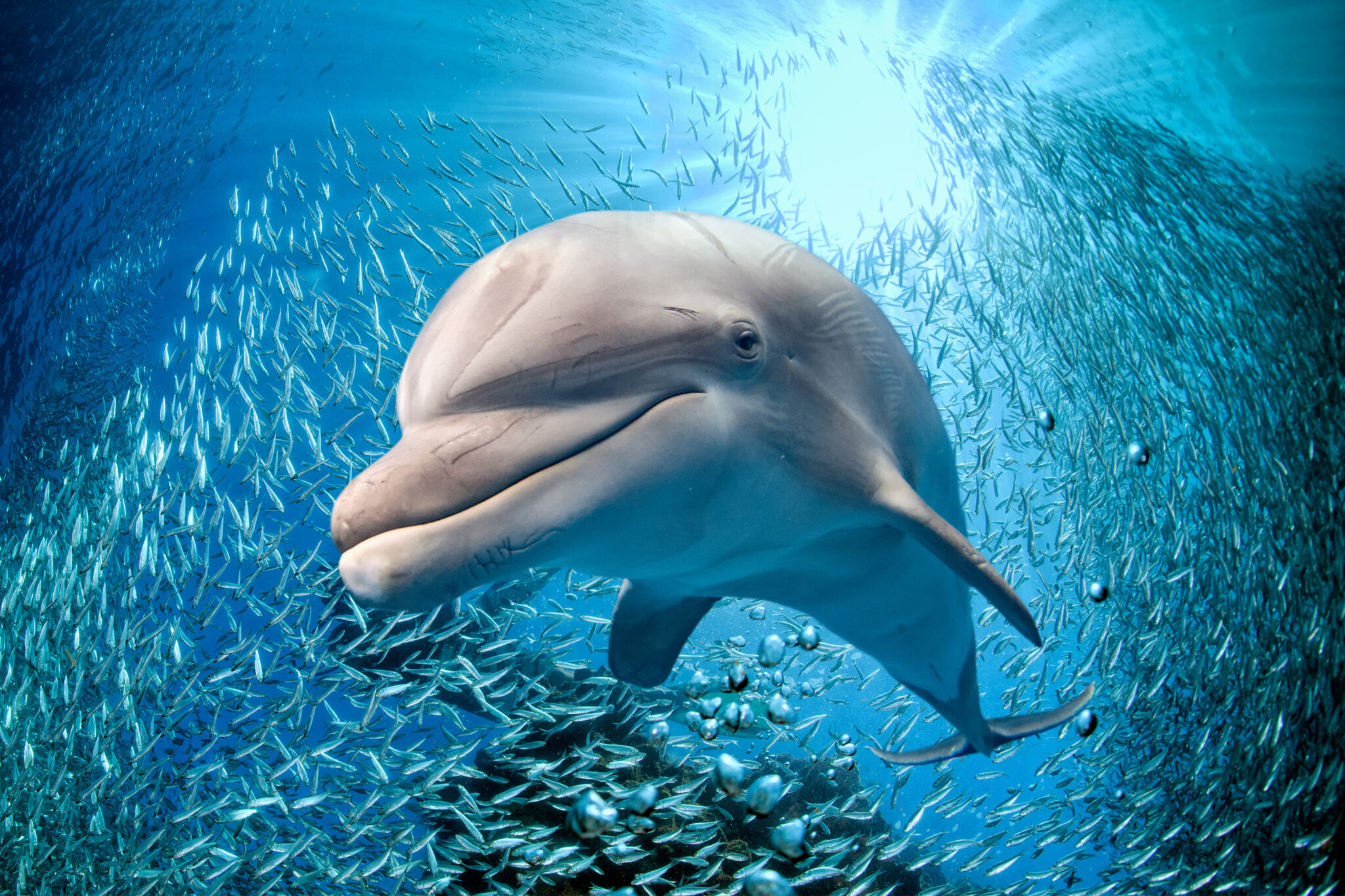How Dolphin Facts Display Their Significance to Marine Biodiversity
How Dolphin Facts Display Their Significance to Marine Biodiversity
Blog Article
Introduction Dolphin Information: Nature's Intelligent Marine Mammals
Dolphins, commonly considered as one of the sea's most smart residents, exhibit a remarkable range of actions and social structures that warrant closer exam. With over 40 unique types, these marine creatures not only demonstrate impressive communication skills and facility social communications yet also have advanced cognitive capacities that challenge our understanding of non-human intelligence. Dolphin Facts. As we discover the nuances of their lives, one need to consider just how these traits influence their communications with humans and journalism importance of preservation. What effects do these insights hold for our partnership with these extraordinary creatures?
Dolphin Species Diversity
Dolphins are a varied team of aquatic creatures coming from the family Delphinidae, which includes over 40 unique types. This household consists of popular species such as the common bottlenose dolphin (Tursiops truncatus), the orca or killer whale (Orcinus whale), and the risso's dolphin (Grampus griseus) Each varieties shows unique physical characteristics, behaviors, and adaptations that allow them to thrive in numerous aquatic environments.
Dolphin species differ substantially in size, varying from the small Maui's dolphin (Cephalorhynchus hectori) at about 1.2 meters to the whale, which can get to sizes of as much as 9 meters. Their coloration also varies, with some varieties presenting striking patterns that aid with camouflage or social signaling. In addition, dolphins populate diverse habitats, from seaside areas and tidewaters to the open ocean, showcasing their adaptability.
Study right into dolphin types diversity highlights the ecological relevance of these creatures, as they play vital functions in marine ecosystems. Recognizing the different types is important for preservation initiatives, as numerous face hazards from habitat environment, contamination, and loss adjustment, requiring targeted protection actions to ensure their survival.
Social Frameworks and Habits
The intricacy of dolphin types is mirrored in their intricate social frameworks and behaviors. Dolphins are understood for their highly social nature, commonly forming teams called sheathings, which can range from a couple of individuals to over a hundred. These shells are commonly composed of relative, showcasing a matrilineal structure where women play a central role in maintaining social bonds and nurturing offspring.

In addition, some types of dolphins, such as orcas, show facility social habits that can include sub-pods or clans with distinctive cultural techniques. These social frameworks are crucial for the survival and well-being of dolphin populations, as they assist in communication, cooperation, and the transmission of expertise throughout generations. Understanding these social characteristics is important for conservation initiatives and the protection of their all-natural habitats.
Interaction Methods
Amongst the different methods of communication, dolphins use an innovative selection of communication methods that promote social communication and coordination within their skins. These techniques incorporate vocalizations, body movement, and echolocation, each serving unique features in their social interactions.
Dolphins produce a variety of clicks, whistles, and pulsed sounds, which work as their primary singing communication. Each dolphin has an one-of-a-kind trademark whistle, comparable to a name, that enables individuals to determine each other also in large teams. These vocalizations can share numerous messages, such as notifying others to danger or coordinating team movements throughout hunting.
Along with articulations, body movement plays a crucial role in dolphin communication. Dolphin postures, such as jumping, rotating, or perhaps refined shifts in alignment, share psychological states and purposes. For instance, aggressive display screens may prevent opponents, while spirited habits can enhance social bonds.
Echolocation, a biological finder system, further help in navigation and hunting. By sending out acoustic waves and analyzing the returning echoes, dolphins can situate prey and barriers efficiently, demonstrating their impressive adaptability in complicated marine environments. Collectively, these communication techniques highlight the intricate social lives of dolphins, highlighting their intelligence in navigating their undersea world.

Intelligence and Trouble Fixing
Acknowledged for their advanced interaction skills, dolphins likewise exhibit exceptional knowledge and analytical capabilities that additionally boost their social communications. Their cognitive abilities are confirmed by their capacity to learn complicated jobs, understand abstract principles, and adjust to different ecological difficulties. Research has actually shown that dolphins can solve elaborate challenges, demonstrating not just their cognitive adaptability but additionally their ability for preparation and foresight.
Dolphins typically participate in participating hunting approaches, showcasing their ability to function as a cohesive device. This team effort needs sophisticated analytic skills, as they need to examine their environment, recognize prospective victim, and coordinate their activities to accomplish a common goal. Furthermore, dolphins have actually been observed utilizing tools, such as marine sponges, to safeguard their snouts while foraging on the sea flooring, more exemplifying their ingenious analytical capabilities.

Human-Dolphin Interactions
Human-dolphin communications have actually captivated scientists and fanatics alike, highlighting the facility relationship between these smart aquatic mammals and people. From old times, dolphins have actually been portrayed in art and mythology, symbolizing consistency and knowledge (Dolphin Facts). Modern communications range from scientific research study and preservation initiatives to recreational activities like dolphin enjoying and swimming with dolphins
Study has shown that dolphins possess advanced social structures and interaction skills, which promote their interactions with people. These experiences often foster emotional connections, with lots of people reporting sensations of pleasure and compassion throughout such experiences. It is vital to come close to these communications with caution, as human activities can interrupt dolphin habits and habitats.
Conservation initiatives progressively concentrate on advertising liable communications, you can check here making certain that human excitement does not compromise dolphin welfare. Education and learning programs aim to raise understanding regarding the eco-friendly significance of dolphins, highlighting the demand for lasting techniques. By understanding the intricate dynamics of human-dolphin interactions, we can foster a respectful conjunction that profits both varieties and maintains aquatic communities for future generations. Eventually, these interactions serve as a reminder of the profound links that can exist between humans and the environment.
Final Thought
In recap, dolphins exemplify impressive intelligence and flexibility within diverse aquatic atmospheres. Their intricate social frameworks, advanced communication approaches, and analytical capacities highlight the intricacy of their behaviors. Human communications with these marine mammals highlight the relevance of responsible preservation initiatives to ensure their survival and the defense of their habitats. Proceeded study and understanding are necessary for promoting a much deeper additional reading understanding of dolphins and promoting their welfare in a progressively threatened ecosystem.
Dolphin species vary significantly in dimension, varying from the little Maui's dolphin (Cephalorhynchus hectori) at around 1.2 meters to the whale, which can get to sizes of up to 9 meters. Dolphins present a variety of social interactions, including grooming and physical get in touch with, which serve to strengthen connections and develop pecking orders.
Recognized for their advanced communication abilities, dolphins also exhibit impressive knowledge and problem-solving abilities that better enhance their social interactions. Modern communications vary from clinical study and preservation initiatives to leisure activities like dolphin swimming and enjoying with dolphins.
Research study has demonstrated that dolphins possess progressed social frameworks and interaction skills, which facilitate their interactions with humans.
Report this page